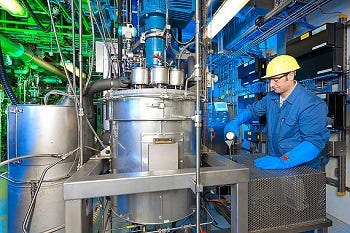Carbon dioxide to debut as PUR raw material
Following a successful test phase, Bayer MaterialScience (Leverkusen, Germany) is aiming to commercialize the use of carbon dioxide as a raw material for polyurethane (PUR) plastics. The company has started the planning process for the construction of a production facility at its site in Dormagen, Germany, where carbon dioxide will be used to produce a precursor for high-quality foam.
July 31, 2013
Following a successful test phase, Bayer MaterialScience (Leverkusen, Germany) is aiming to commercialize the use of carbon dioxide as a raw material for polyurethane (PUR) plastics. The company has started the planning process for the construction of a production facility at its site in Dormagen, Germany, where carbon dioxide will be used to produce a precursor for high-quality foam.
|
The CO2-incorporating precursor process has been tested intensively over the last two years. Bayer has now started planning the construction of a production facility at its site in Dormagen, Germany. |
The objective is to initially make larger quantities of this precursor available to selected processors from 2015. Bayer also expects the new process to provide economic advantages over the conventional production method. "CO2 is taking on a new light: The waste gas is turning into a useful and profitable raw material. That makes us one of the first companies worldwide to take an entirely different approach to the production of high-quality foams," says Patrick Thomas, CEO of Bayer MaterialScience.
Bayer collaborated with partners from industry and academia to develop the process, which has been tested intensively over the last two years. As part of the publicly funded research project "Dream Production," a pilot plant at Bayer's main site in Leverkusen produced smaller quantities of the precursor polyol, in which the CO2 is chemically bound.
The substance is used for the production of polyurethane foam. This high-quality material can be found in many everyday items, including upholstered furniture, automotive parts, refrigeration equipment and insulation material for buildings. In internal tests, the new foams show at least the same high quality as conventional material based entirely on fossil fuels.
"After successfully completing the test phase, we are now launching Stage 2 with the target of commercialization," say
About the Author(s)
You May Also Like



